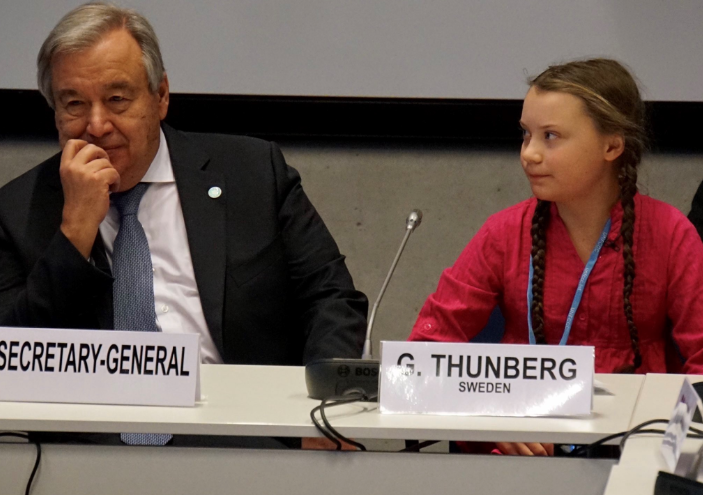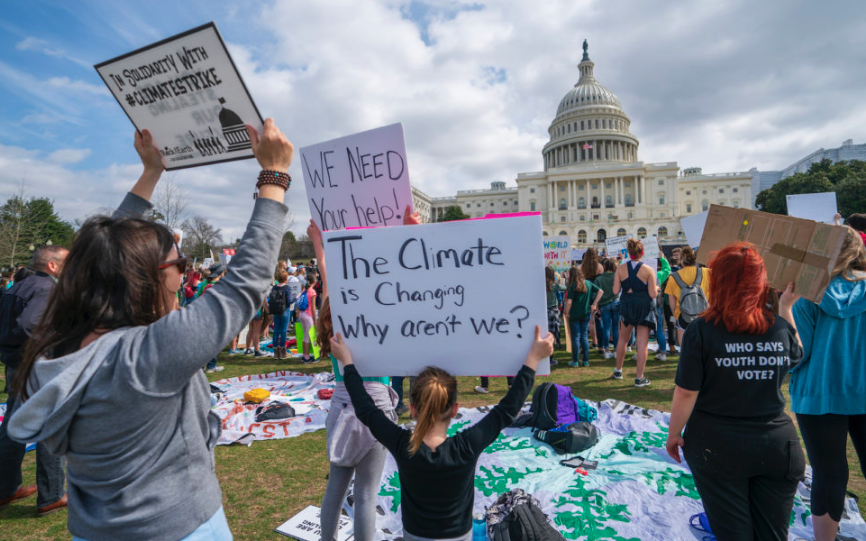CommentsPLANNING WATCH-Los Angeles, like most American and global cities, is facing three, inter-connected crises.
If not reversed, they will eventually lead to a societal breakdown, similar to what we expect after “the big one.” When this happens, the new normal would minimally be loss of electricity and phone services, impassable streets, failed water and sewer lines, and the collapse of supply lines for food and medications.
-
Global climate crisis: Last week’s global climate marches and this week’s climate crisis sessions at the United Nations are driven by the latest climate change findings: the worst case scenarios are the most accurate. As the climate crisis merges with two other crises, it is abundantly clear that humanity is headed for the cliff. Our elected officials offer catchy sound bites, but they rarely follow them up with programs that confront the energy, military, and real estate lobbies that dominate their political donors.
Furthermore, while they whistle when walking past the graveyard, the climate crisis is connected to two other ignored crises:
-
Imperial overreach crisis: As carefully described by the late UC Berkeley and UC San Diego historian Chalmers Johnson, the United States is headed for mid-century implosion because of what he termed “imperial overreach.” In a series of three books, Prof. Johnson argued that the US’s global network of 800 foreign military bases, current and anticipated forever wars, and mammoth spending for actual conflicts, as well as pure pork, is dragging the United States into a destructive downward spiral. He offered a path out, but 10 years later, nearly all elected officials continue to ignore his advice.
One reason Chalmers Johnson predicted the implosion of the United States was infrastructure decay. This is because so much of this country’s vast resources are siphoned off for direct and indirect military expenditures, not socially productive investments, like low-income housing, healthcare, and education.
-
Infrastructure crisis: As prescient as Prof. Johnson was, he missed two other crises that compound imperial overreach: the climate crisis and the real estate/infrastructure crisis. As brilliantly analyzed by Sam Stein in the Real Estate State, the world is awash with trillions of dollars in underperforming capital. Much of it is drawn to speculative real estate projects in cities like Los Angeles, since these projects offer high profits, few short-term risks, and “business-friendly” politicians. This real estate boom, now on full display in the City of Angels, has little to do with public need. It is also fully disconnected from LA’s stretched and neglected public infrastructure and services. Its obvious infrastructure consequences -- electricity blackouts, water main breaks, homelessness, crumbling sidewalks, and traffic congestion -- are barely noticed by the real estate investors and their accomplices. They fully intend to unload their assets and pull their profits out L.A. one step ahead of induced catastrophes.
City Hall’s Mini-Response: Unlike the UN, the responses from LA’s City Hall to these approaching catastrophes are not deafening. Imperial overreach is never mentioned, while climate-related threats get a wink and infrastructure failure gets a polite nod. The last time a General Plan element, the General Plan Framework, analyzed the city’s poorly maintained infrastructure and public services was 25 year ago, in 1996. Unfortunately, the Planning Department recently removed a searchable version of the Framework and its excellent Environmental Impact Report from its website. But, don’t despair. They simultaneously added a 1971 Refuse Disposal element to demonstrate their concern for LA’s strapped infrastructure and public services.
Yes, the Mayor’s office has prepared several pLAn documents focusing on climate change adaptation. But, as I have written previously, these are only short-lived executive documents, without Environmental Impact Reports or implementing ordinances. Plus, they are not linked to the City’s budget, Departmental work programs, or, most importantly, the legally required planning process, including LA’s General Plan. As for monitoring the impacts of the climate crisis on Los Angeles, it is either rudimentary and ignored or completely absent. While the City Council finally created a Climate Emergency Mobilization Commission and Office with several staffers, Mayor Garcetti opposed the creation of an official climate emergency department.
But, this blasé approach to confronting a life-threatening climate crisis hardly means we don’t precisely know what City government ought to do. There are plenty of blueprints that go beyond talking points and slick executive documents. Here is a quick inventory of how the City’s enormous resources could be harnessed to battle the climate crisis:
The State of California offers detailed resources that cities can use to mitigate and adapt to climate change. These documents include the current General Plan Guidelines, which has a new chapter on how California cities can systematically address the climate crisis, as well as use the California Environmental Quality Act (CEQA) to address climate change. Since LA’s existing General Plan elements are on life-support, this is precisely the time for City Hall to follow, not ignore, the State’s leadership on the climate crisis.
UCLA proposals: In addition to the State’s detailed climate guidelines, in 2012 UCLA also prepared Vision 2021: A Model Environmental Sustainability Agenda for Los Angeles’ Next Mayor and City Council. Seven years later, it is still totally relevant, carefully describing how the City of Los Angeles should respond to the climate crisis. It many proposals include:
· Switch from fossil fuels to renewables, solar and wind, for electricity generation.
· Install cool roofs and cool streets.
· Create a municipal car-sharing program based on zero emission vehicles.
· Repair LA's infrastructure for walking, bicycling, and accessing public transit.
· Use local sources for water.
· Increase the amount of and access to open space.
-
Integrate climate change considerations into all city and agency plans (e.g., drought plans, natural disaster risk plans, coastal storm plans, etc.).
-
Increase LA’s tree canopy.
Some of these UCLA-suggested programs are no-brainers. They only require a re-allocation of the City’s extensive budget and work force, such as:
Los Angeles’s urban forest is sparse and slowly shrinking because of climate change induced heat and pests, as well as institutional neglect and reckless real estate projects. There is no technical reason, however, why Los Angeles could not quickly establish well-maintained tree-lined boulevards and parks, like all surrounding cities. If Culver City and Santa Monica can do it, so can Los Angeles. The broad benefits of a well-planted urban forest to mitigate climate change, among other benefits, would quickly be on view.
Repairing and upgrading LA’s decrepit sidewalks, streets, intersections, bus stops, and bicycle lanes would address two parallel crises: infrastructure and climate. Luckily, these broad improvements to the public right-of-way are carefully delineated in two documents that City Planning has already posted on its website: Mobility Hubs and Complete Streets. The challenge, of course, is to motivate City Hall to follow its own policies, even when they undermine the business model of major political donors.
The California Environmental Quality Act (CEQA) remains a powerful but poorly used regulatory tool to assess the climate impacts of all public and private projects. Quite simply, environmental reviews allow decision makers to carefully consider a project’s climate impacts when approving them. If followed, the lower a project’s carbon footprint, the better its chance for approval. This approach would mark a complete reversal from existing practice, in which City Hall decision makers unfailingly approve each project’s worst climate alternative. When real estate profitability is at odds with environmental, energy, and climate impacts, the former always wins.

Greta Thunberg at the United Nations this week.
I am not optimistic that our politicians will seriously listen to and follow the lead of committed young people, like Greta Thunberg, who spoke at the United Nations this week. Likewise, I doubt many elected officials will pare back their support for vast military budgets, nor block the ruinous real estate boom clinging to the end of the current business cycle. But there is hope in the knowledge that the answers are in front of our eyes, if we care to look. Furthermore, there are enough examples of cities and countries that take these three inter-connected crises seriously, and that are valiantly trying to stop them.
Our challenge, therefore, is to create enough pressure from below to persuade our officials to follow their lead.
(Dick Platkin is a former Los Angeles city planner who reports on local planning issues for CityWatchLA. He serves on the board of United Neighborhoods of Los Angeles (UN4LA) and welcomes comments and corrections at [email protected]. Selected previous columns are available through the CityWatchLA archives and the blog, Plan-it Los Angeles.) Prepped for CityWatch by Linda Abrams.















